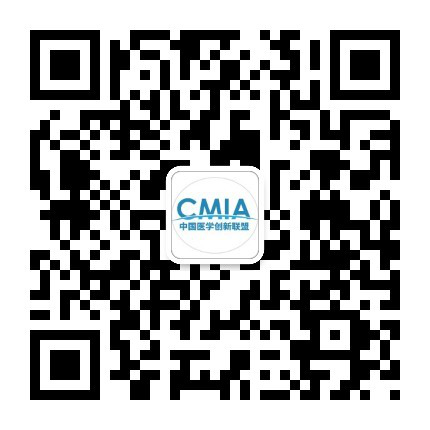[罂粟摘要]咪达唑仑对自闭症谱系异常的影响:一项回顾性观察性分析
关注罂粟花,共同学习麻醉学最新文献!
咪达唑仑对自闭症谱系异常的影响:一项回顾性观察性分析
贵州医科大学 麻醉与心脏电生理课题
翻译: 马艳燕
编辑: 严旭
审校: 曹莹
背景:
虽然咪达唑仑通常被用作不配合患者的术前用药,但在γ-氨基丁酸异常的自闭症谱系障碍患者中其效果很难预测。本研究旨在调查自闭症谱系异常对咪达唑仑用作术前用药效果的影响。
方法:
这项回顾性观察研究于2017年4月至2018年8月期间进行。在用七氟烷诱导的全身麻醉下进行牙科手术之前,390名不配合的患者接受了咪达唑仑的术前用药。以用药前30分钟受试者的警觉性/镇静评分为客观变量进行序贯回归分析。年龄、性别、美国麻醉医师协会的身体状况等级、术前用药途径、单位体重剂量、是否存在特定疾病(自闭症谱系障碍、智力障碍、癫痫、脑瘫和其他精神疾病)以及定期服用苯二氮卓类或非苯二氮卓类精神药物给药被作为解释变量纳入。使用Kendall秩相关系数评估受试者在入院和吸入诱导期间的警觉性/镇静评分与合作水平(1.明显的消极反应; 2.消极反应; 3.积极反应; 4.明显的积极反应)之间的相关性。所有数据均从麻醉记录和病历中提取。
结果:
年龄(比值比 1.437 [95%置信区间(CI)1.213–1.708] ,P <0.001)、自闭症谱系异常 (1.318 [1.079–1.612],P =0.007)、苯二氮卓类药物(0.574 [0.396–0.827],P =0.002)和肌内注射途径(1.478 [1.137–1.924], P =0.004)与受试者的警觉性/镇静评分显著相关,而评分与入院期间的合作水平(τ = −0.714, P <0.001)和吸入诱导(τ = −0.606,P < .001)呈负相关。
结论:
自闭症谱系异常患者可能对术前使用咪达唑仑有一定的敏感性;但是,定期服用苯二氮卓类药物可能会降低效果。
原始文献来源:
Hanamoto H, Hirose Y, Toyama M, Yokoe C, Oyamaguchi A, Niwa H. Effect of midazolam in autism spectrum disorder: A retrospective observational analysis. Acta Anaesthesiol Scand. 2023 May;67(5):606-612. doi: 10.1111/aas.14211. Epub 2023 Feb 15.
英文原文:
Effect of midazolam in autism spectrum disorder: A retrospective observational analysis
Background:While midazolam is commonly used as premedication for uncooperative patients, its effects are difficult to predict in patients with autism spectrum disorder for whom abnormalities in gamma-aminobutyric acid have been reported. This study aimed to investigate the influence of autism spectrum disorder on the effect of midazolam when used as premedication.
Methods:This retrospective observational study was performed between April 2017 and August 2018. Before inducing general anesthesia with sevoflurane for dental treatment, 390 uncooperative patients received premedication with midazolam. Ordinal logistic regression analysis was performed with the Observer's Assessment of Alertness/Sedation score 30 min after premedication as the objective variable. Age, sex, American Society of Anesthesiologists physical status class, premedication route, dose per body weight, presence of specific disorders (autism spectrum disorder, intellectual disability, epilepsy, cerebral palsy, and other psychiatric disorders), and regular benzodiazepine or non-benzodiazepine psychotropic administration were included as explanatory variables. Kendall's rank correlation coefficient was used to assess the correlation between the Observer's Assessment of Alertness/Sedation score and cooperation level (1, obvious negative response; 2, negative response; 3, positive reaction; 4, obvious positive reaction) during admission and inhalation induction. All data were extracted from anesthesia and medical records.
Results:Age (odds ratio 1.437 [95% confidence interval (CI) 1.213-1.708], P < .001), autism spectrum disorder (1.318 [1.079-1.612], P = .007), benzodiazepine medication (0.574 [0.396-0.827], P = .002), and intramuscular route (1.478 [1.137-1.924], P = .004) were significantly associated with the Observer's Assessment of Alertness/Sedation score, while the score was negatively associated with cooperation levels during admission (τ = -0.714, P < .001) and inhalation induction (τ = -0.606, P < .001).
Conclusions: Patients with autism spectrum disorder may be susceptible to premedication with midazolam; however, regular benzodiazepine administration may reduce the effect.
不感兴趣
看过了
取消
不感兴趣
看过了
取消
精彩评论
相关阅读





 打赏
打赏


















 010-82736610
010-82736610
 股票代码: 872612
股票代码: 872612




 京公网安备 11010802020745号
京公网安备 11010802020745号


